Kitchen lighting rules – 5 strategies designers say give the perfect results
Achieving a great atmosphere and look in your kitchen will come down to smart lighting. Here's how the experts get it right


Kitchen lighting ideas are an important part of any successful design scheme, with functional and aesthetic illumination particularly important in a space that is used increasingly for entertaining as much as cooking.
Offering far more than mere practicality, a good kitchen lighting scheme is a decorating tool in its own right. Light can make a room feel larger and airier; it can play with proportions and disguise unfavorable aspects; and it can radically change the mood, running the spectrum from dramatic and invigorating to soft and relaxing.
Here are just some of the kitchen lighting ideas and golden rules to follow to bring a new dimension and depth when planning kitchen lighting.
Kitchen lighting rules
'Well-planned lighting can make a small kitchen look bigger or a basement kitchen feel as if it is above ground,' says Sally Storey, design director at John Cullen.
'Mixing different light sources offers versatility too, for example, transforming a practical kitchen into an alluring dining area by night. If you’re on a budget, well-chosen illumination will add glamor to a scheme. Even simple materials, such as white tiles, take on a new life when they’re bathed in the right light.' Yet we tend to approach lighting as an afterthought.'
'Most people leave the lighting to last because they’re afraid of making the wrong decisions,' says Sally. 'But, if you plan it early on, you have the greatest flexibility and will save on potentially costly mistakes later on.'
These kitchen lighting rules and expert advice will help you start that journey.
1. Think about how you use your kitchen
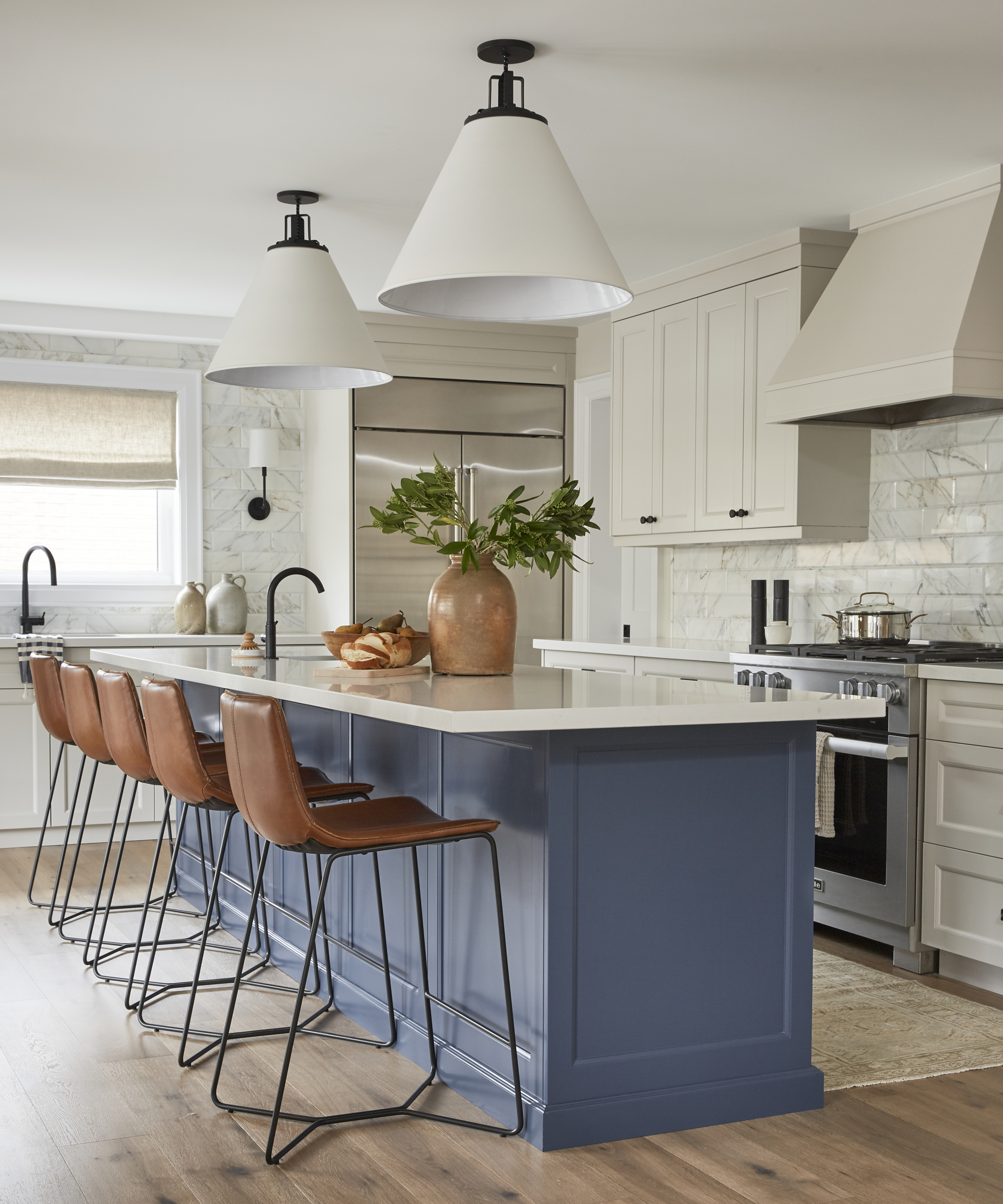
Each kitchen has its own demands, so it’s important to ask a few questions, advises Emma Burns of Emma Victoria ID.
'First, what is the space used for? The greater the number of activities, the more flexible the lighting needs to be. Then consider the main features you’d like to highlight, perhaps some decorative kitchen shelving, and the various moods you want to achieve: do you want the space to feel open or more intimate? And, of course, think about any elements you’d like to play down, such as the garbage can or an unsightly appliance. Finally, create focal points, but not too many as the room will look messy.'
It is also important to think about all the different people who will use the room, including people of varying age ranges. We all like to think a room has plenty of light but as we get older, clarity and sharpness of vision start to be lost. At this point, elements of strong lighting are needed to compensate.
2. Plan a layered lighting scheme
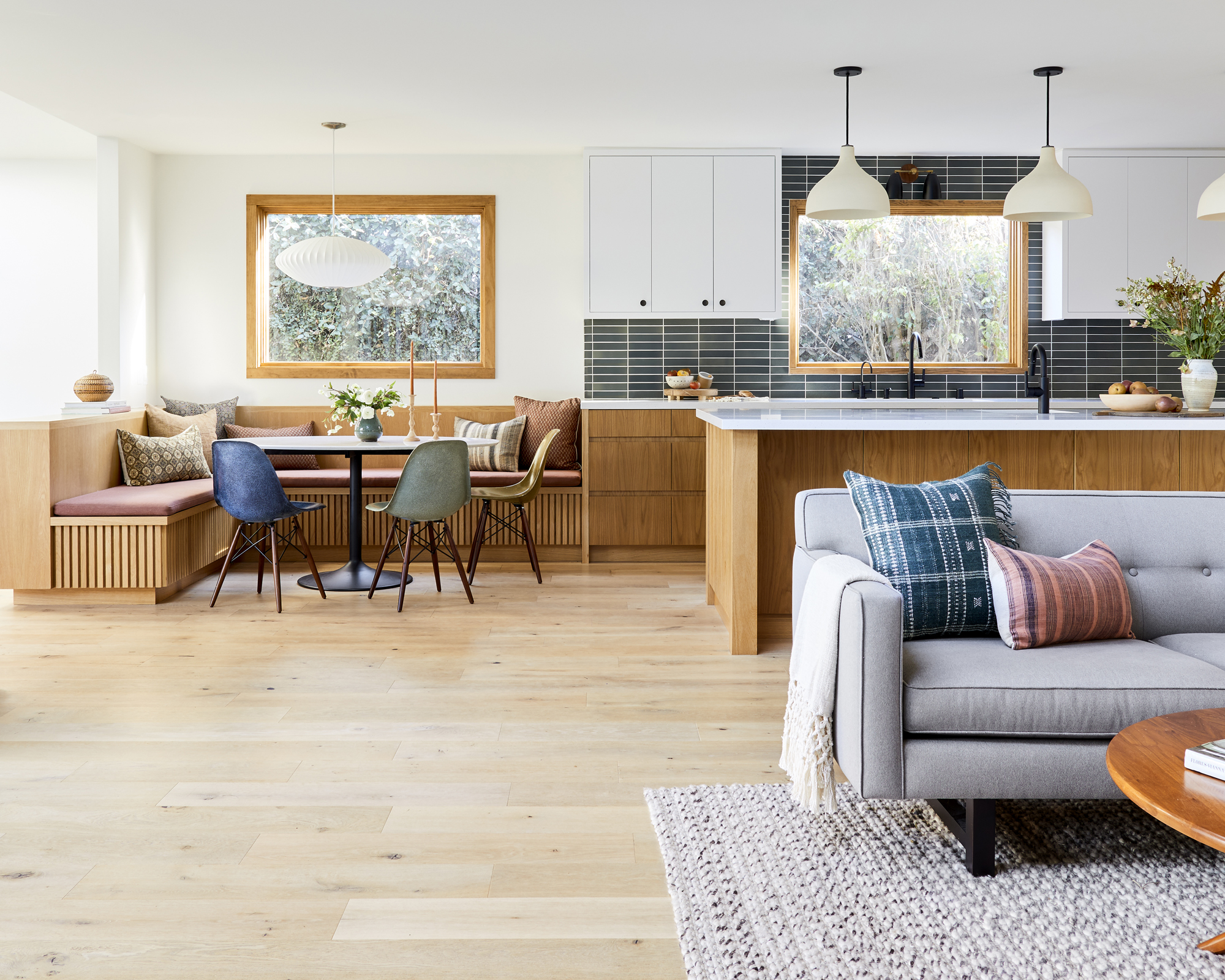
As the kitchen layout develops, start thinking about the lighting, not only for wiring purposes but also so that you can problem-solve as the plans unfold.
Kitchens usually need to include task, mood, accent, and decorative lighting. Task lighting is the most practical and covers hardworking areas like the prep space, cooking area, and sink; mood lighting creates different atmospheres; accent lighting illuminates key features or zones, while decorative lighting is eye-catching and can simply introduce a bit of character.
A layered approach to lighting will not just set the mood for your kitchen but bring interest and depth.
3. Choose the right color temperature
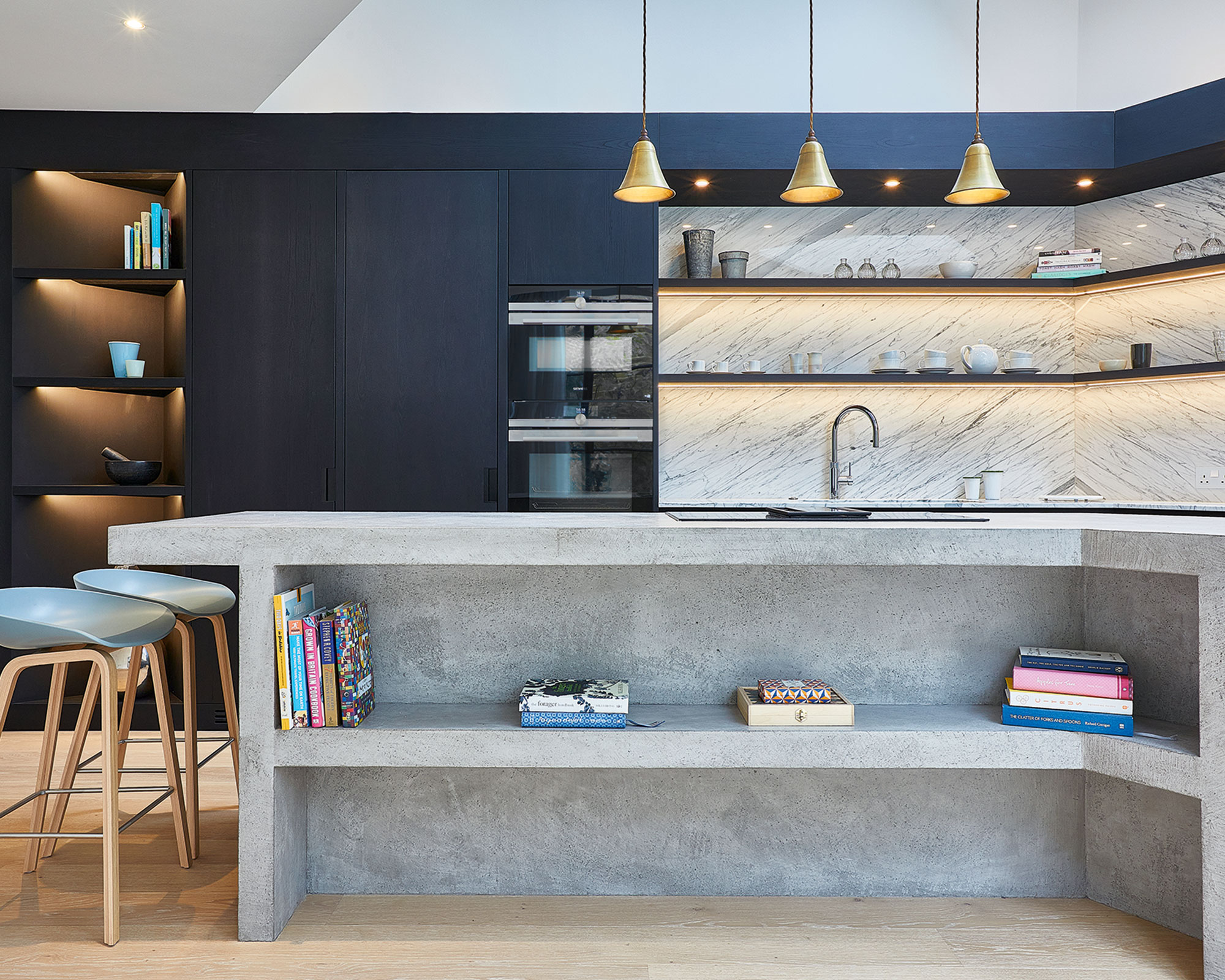
Getting the color temperature right in a kitchen is imperative. Color temperature is measured in kelvins (K). The ideal is 2,700K, which is a warm white; 3,000K is a much cooler tone, while 1,000K is candlelight warmth.
For a kitchen, opt for a cool white light. That means a Kelvin rating of 3,000 to 4,500. Warm, yellower light with a lower Kelvin rating is better for a living space rather than one where food preparation and cooking take place.
'To create a warm atmosphere in the evening, choose lights that can be transitioned from cool to warm,' recommends Graeme Smith, head of retail and commercial design at Life Kitchens. 'Offering versatility, the adjustable tone means that it can be cool when cooking and warm when dining or entertaining.'
The light you choose in the kitchen must be functional. However, it’s also important to create soft accent areas that contribute to a more ambient, social space when the kitchen is not being used as a purely functional space.
4. Go for dimmers where possible
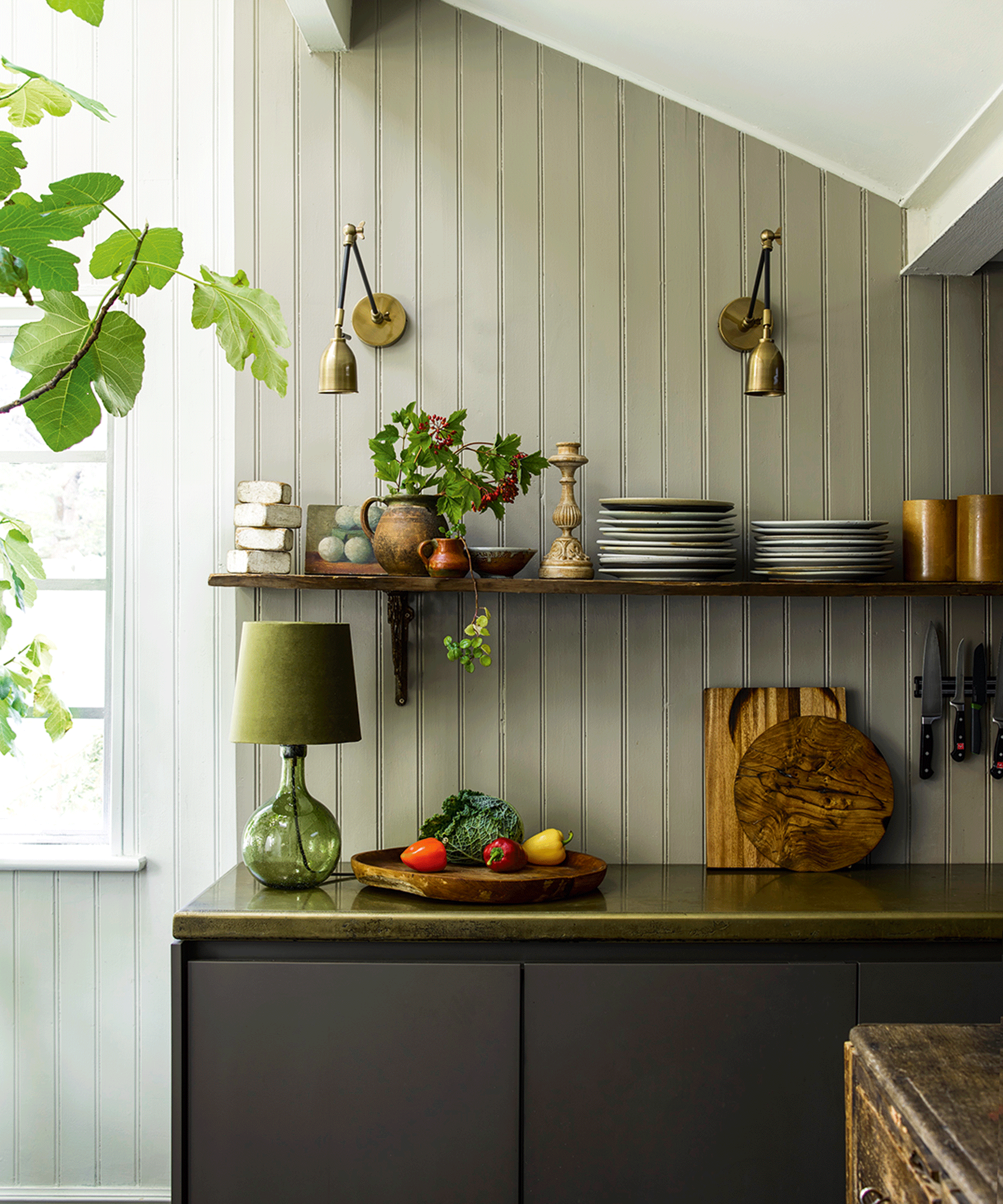
The key to setting the mood is to use lighting controls so that each effect can be individually controlled. ‘At a minimum, add dimmer switches so you can manipulate the light levels,’ says Sally Storey, creative director of John Cullen Lighting. She also recommends having sockets set into the floor or pop-up sockets hidden within a kitchen island or countertop to avoid having trailing wires for appliances.
For lighting aficionados, contrast is essential – you need lots of light and shadow in a kitchen that doubles up as a dining space.
5. Do not overload your kitchen with light fixtures
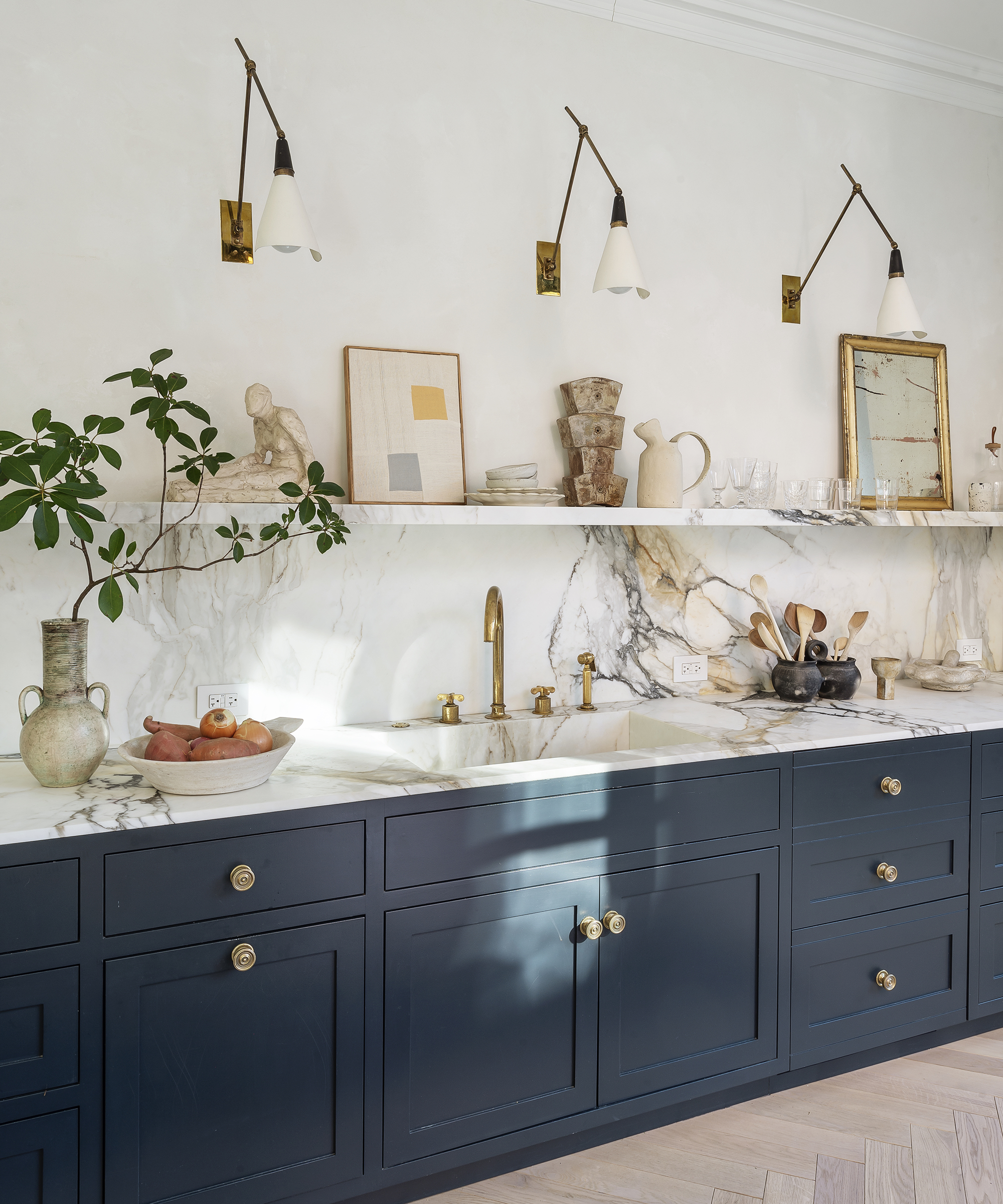
It is relatively easy to go overboard when choosing kitchen lighting, after all, it is such a fundamental aspect of designing a kitchen.
In large open-plan kitchens, thoughtfully planned lighting can transform the setting from workaday functional to dinner party allure at the flick of a switch. 'Start by installing good task lighting, making sure the beam is broad enough to light the area well,' says Diane Berry of Alno.
'For dining areas, a good trick is to install a lowered ceiling with LED strip lighting to illuminate the ceiling invisibly and create a hidden glow; you can vary the colors to adjust the mood.' You could also add small lights along the kick plate of floor cabinets to generate an appealing floor-sweeping light by night.
If in doubt, consult the experts. As illumination choices become more complex, it can make sense to call on a specialist designer. 'Our job is to simplify the process and help people use lighting in a more interesting way,' says Sanjit Bahra of Design Plus Light. 'We also give objective information on brands, as quality varies hugely. The best time to consult us is at the beginning of a project.'
Sign up to the Homes & Gardens newsletter
Design expertise in your inbox – from inspiring decorating ideas and beautiful celebrity homes to practical gardening advice and shopping round-ups.

Jennifer is the Digital Editor at Homes & Gardens. Having worked in the interiors industry for several years in both the US and UK, spanning many publications, she now hones her digital prowess on the 'best interiors website' in the world. Multi-skilled, Jennifer has worked in PR and marketing and occasionally dabbles in the social media, commercial, and the e-commerce space. Over the years, she has written about every area of the home, from compiling houses designed by some of the best interior designers in the world to sourcing celebrity homes, reviewing appliances, and even writing a few news stories or two.
-
 9 longest-living houseplants – expert recommendations and tips for species that can live over 10 years
9 longest-living houseplants – expert recommendations and tips for species that can live over 10 yearsInvest in these houseplants now for years of luscious foliage in your home
By Tenielle Jordison Published
-
 Kris Jenner's 'organic modern' living room champions the most talked-about trend of 2025 – it's the new way to do luxe-minimalism
Kris Jenner's 'organic modern' living room champions the most talked-about trend of 2025 – it's the new way to do luxe-minimalismSimple silhouettes, organic textures, and industrial nuances infuse functional pieces with elegance to create an effortlessly chic and easy-to-live-with living space
By Jennifer Ebert Published